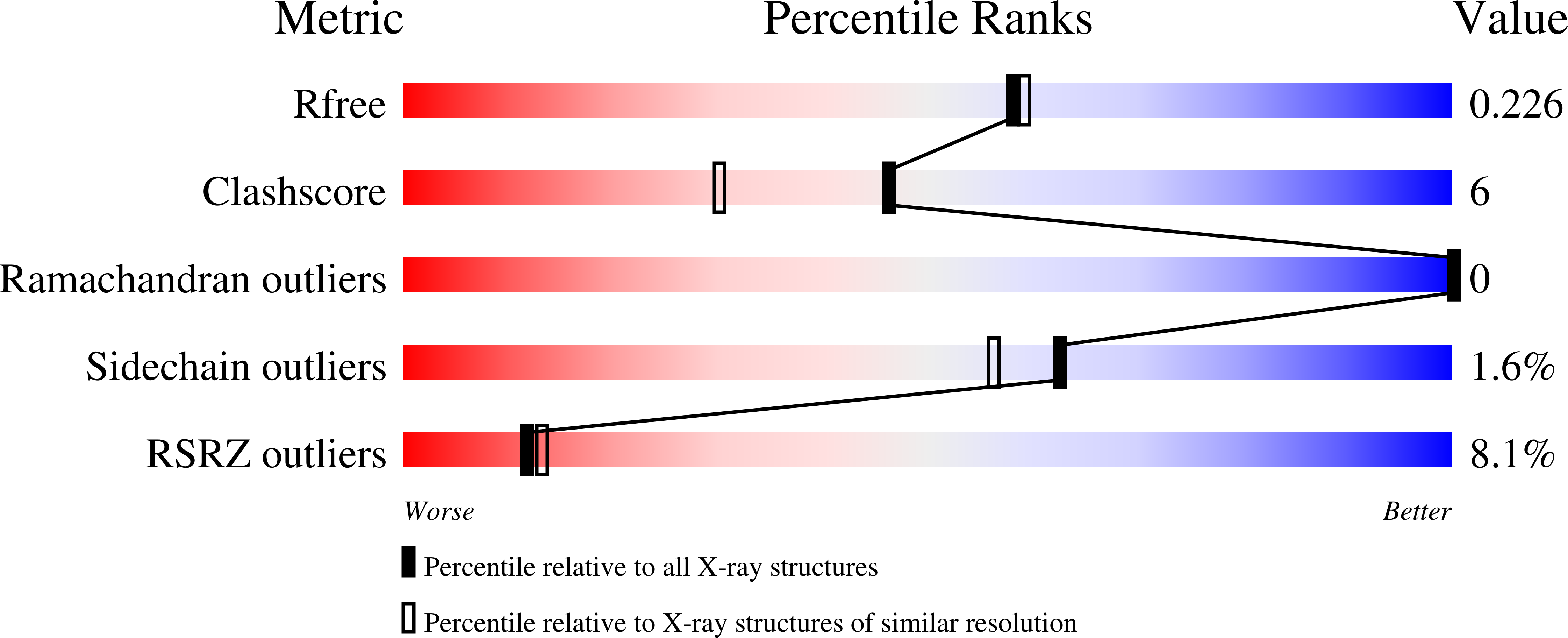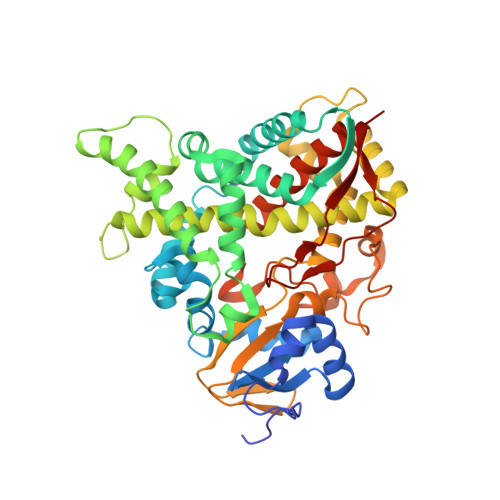A requirement for an active proton delivery network supports a compound I-mediated C-C bond cleavage in CYP51 catalysis.
Hargrove, T.Y., Wawrzak, Z., Guengerich, F.P., Lepesheva, G.I.(2020) J Biol Chem 295: 9998-10007
- PubMed: 32493730
- DOI: https://doi.org/10.1074/jbc.RA120.014064
- Primary Citation of Related Structures:
6UEZ - PubMed Abstract:
CYP51 enzymes (sterol 14α-demethylases) are cytochromes P450 that catalyze multistep reactions. The CYP51 reaction occurs in all biological kingdoms and is essential in sterol biosynthesis. It removes the 14α-methyl group from cyclized sterol precursors by first forming an alcohol, then an aldehyde, and finally eliminating formic acid with the introduction of a Δ14-15 double bond in the sterol core. The first two steps are typical hydroxylations, mediated by an electrophilic compound I mechanism. The third step, C-C bond cleavage, has been proposed to involve either compound I ( i.e. FeO 3 + ) or, alternatively, a proton transfer-independent nucleophilic ferric peroxo anion (compound 0, i.e. Fe 3 + O 2 - ). Here, using comparative crystallographic and biochemical analyses of WT human CYP51 (CYP51A1) and its D231A/H314A mutant, whose proton delivery network is destroyed (as evidenced in a 1.98-Å X-ray structure in complex with lanosterol), we demonstrate that deformylation of the 14α-carboxaldehyde intermediate requires an active proton relay network to drive the catalysis. These results indicate a unified, compound I-based mechanism for all three steps of the CYP51 reaction, as previously established for CYP11A1 and CYP19A1. We anticipate that our approach can be applied to mechanistic studies of other P450s that catalyze multistep reactions, such as C-C bond cleavage.
Organizational Affiliation:
Department of Biochemistry, Vanderbilt University School of Medicine, Nashville, Tennessee, USA.
















